Bringing Healthcare Home: The Rise of Virtual Consultations
The advancement of telehealth services has transformed how patients manage minor illnesses such as flu, cold, and other common maladies. With easy access from smartphones, tablets, or computers, online medical consultations offer a safe, efficient way to receive diagnosis, advice, and treatment without stepping into a clinic. This article explores the scope, procedures, benefits, and treatment options of virtual care for everyday illnesses, ensuring you know when and how to utilize these services effectively.
What are online medical consultation services for flu, cold, and minor illnesses?
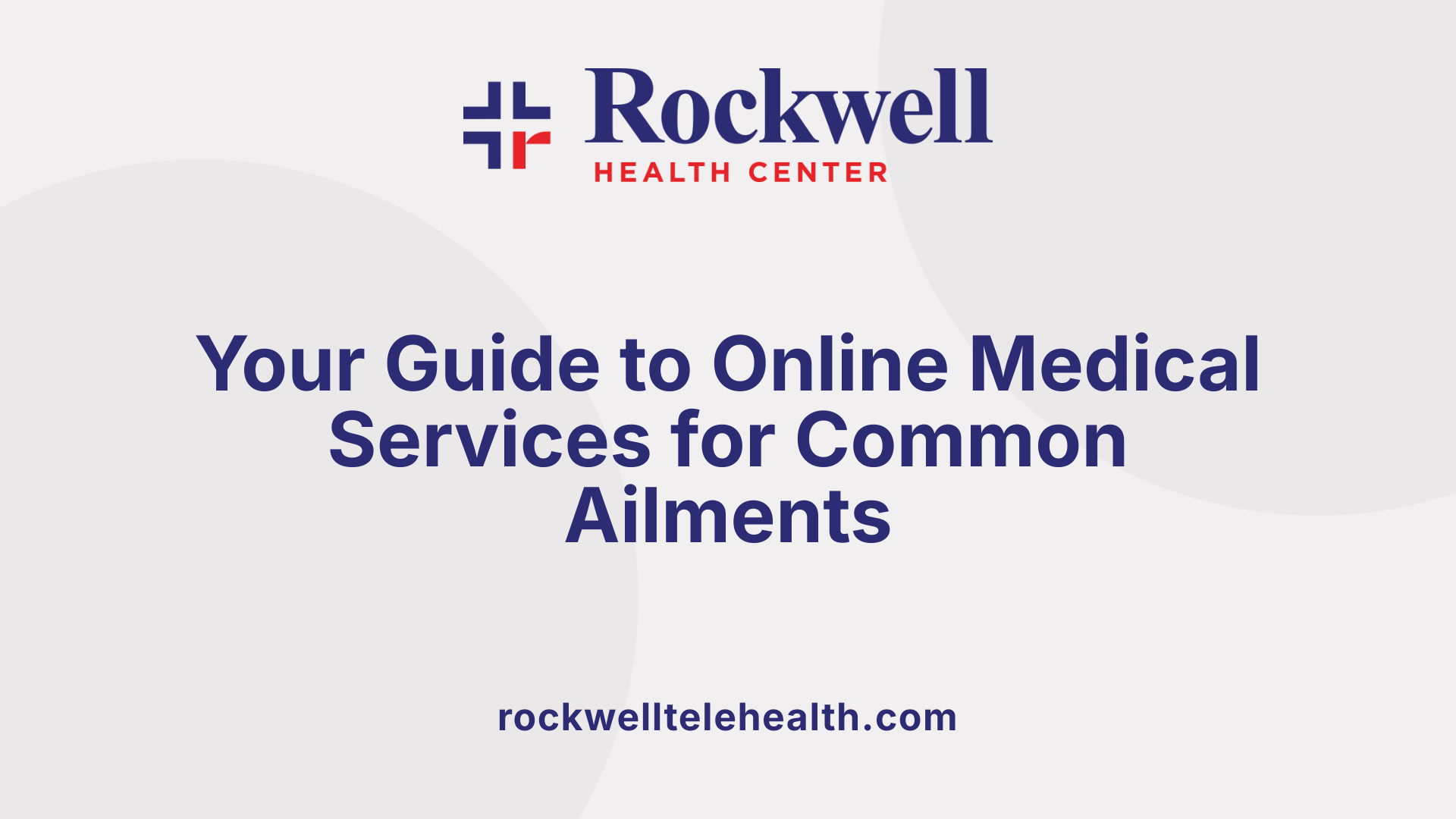
Overview of virtual healthcare for minor ailments
Online medical consultation services have transformed how patients manage common illnesses such as the flu, colds, and minor injuries. These platforms connect individuals with licensed healthcare providers through internet-based tools, allowing diagnosis and treatment without visiting a clinic physically. They are designed to make healthcare more accessible, especially when symptoms are manageable and do not require emergency intervention.
Many services operate 24/7, providing round-the-clock access to care. Patients can typically seek help for symptoms like coughs, congestion, sore throats, fever, and minor injuries such as sprains or skin rashes. Virtual visits often include guidance on symptom management, medication prescriptions, and health advice, all delivered via secure video, phone, or app-based consultations.
This approach helps reduce wait times and travel, offering a quick alternative for tackling everyday health concerns. It also enables providers to issue prescriptions electronically—such as antiviral medications for flu or antibiotics for bacterial infections—and coordinate follow-up care as needed.
Methods of consultation: video, phone, app-based
Platforms like MinuteClinic Virtual Care, Doctor On Demand, Walgreens Virtual Healthcare, PlushCare, and Everlywell utilize a variety of communication methods to connect providers and patients. Most primarily offer video consultations, allowing face-to-face interaction that closely mimics in-person visits.
Phone consultations are also common, especially for simpler cases or those lacking internet access. Some platforms feature proprietary mobile apps that streamline scheduling, medical history entry, and the consultation process. These apps are compatible with smartphones and tablets, making healthcare accessible with just a few taps.
In addition, e-visits—electronic visits—are increasingly popular. Patients fill out online questionnaires that collect symptom details, medical history, and other relevant information. This method is often used for non-urgent issues and can provide treatment plans or prescriptions promptly via email.
Device accessibility and user convenience
Virtually all services are optimized for multiple devices, including smartphones, tablets, and computers, enhancing convenience and ease of use. The platforms are designed to be user-friendly, requiring minimal technical skills to navigate.
Patients usually need to create an account, verify identity with a government-issued ID, and enter their medical history before the consultation. The entire process—from scheduling to receiving treatment—is designed to be as seamless as possible, often taking less than 10 minutes to set up a visit.
Once connected, healthcare providers can review symptoms, ask follow-up questions, conduct visual assessments (via video), and recommend remedies or medications. Many services provide follow-up messaging or additional support, making ongoing care more manageable.
Scope of illnesses treated remotely
Online healthcare services are well-suited for a broad range of minor, non-emergency conditions. Commonly treated illnesses include:
- Cold and flu symptoms
- Sinus infections
- Ear infections
- Pink eye
- Strep throat
- Respiratory infections
- Skin conditions like rashes or insect bites
- Urinary tract infections
- Some sexually transmitted infections
In addition to physical ailments, many platforms offer mental health services, including therapy and counseling for anxiety, depression, stress, and postpartum issues. Pediatric care is available through certain providers, covering common childhood illnesses under parental supervision.
While these services are versatile for minor health concerns, they are not suitable for emergencies like severe chest pain, difficulty breathing, or suspected strokes. Urgent or life-threatening conditions always warrant in-person or emergency department care.
Prescription capabilities and limitations
One of the major benefits of virtual care is the ability to prescribe medications when appropriate. Providers can issue prescriptions for antibiotics, antivirals (such as Tamiflu for flu), and some non-controlled medications based on the consultation.
For illnesses like the flu, antivirals are most effective if started within 48 hours of symptom onset. Online providers can prescribe these medications electronically, with prescriptions sent to the patient’s chosen pharmacy for pickup or home delivery.
However, restrictions exist regarding controlled substances. Most online platforms do not prescribe medications like opioids or certain stimulants during virtual visits.
Additionally, some services offer additional health management tools, including referrals for lab testing or specialist consultations, further supporting comprehensive care for minor illnesses.
| Service Provider | Consultation Methods | Available Prescriptions | Scope of Treatments | Notable Features |
|---|---|---|---|---|
| MinuteClinic Virtual Care | Video, app, phone | General medicines, antivirals, prescriptions sent electronically | Colds, flu, strep, mental health, chronic conditions | 24/7 availability, HIPAA compliant, insurance accepted |
| Doctor On Demand | Video, app | Wide range, including psychiatric meds | Minor illnesses, mental health, primary care | Quick response times, comprehensive mental health services |
| Walgreens Virtual Healthcare | Video, app | Prescriptions for common illnesses | Cough, cold, COVID, pink eye, sinus infections | Available in select states, fast appointments |
| PlushCare | Video | Flu antivirals, general prescriptions | Flu, cold, allergies, minor illnesses | Board-certified doctors, prescription delivery |
| Everlywell | Video, app | Flu antivirals like Tamiflu, lab testing | Flu diagnosis, prescriptions, testing | Specialty testing options, HIPAA secure |
| MD Live | Video, phone | Broad medication options | Urgent care, mental health, chronic conditions | 24/7 service, wide provider network |
This summarized overview illustrates how virtual healthcare services offer practical, accessible, and efficient management of minor health issues, making them a vital component of modern healthcare.
Conditions commonly treated through telehealth for flu, cold, and minor illnesses
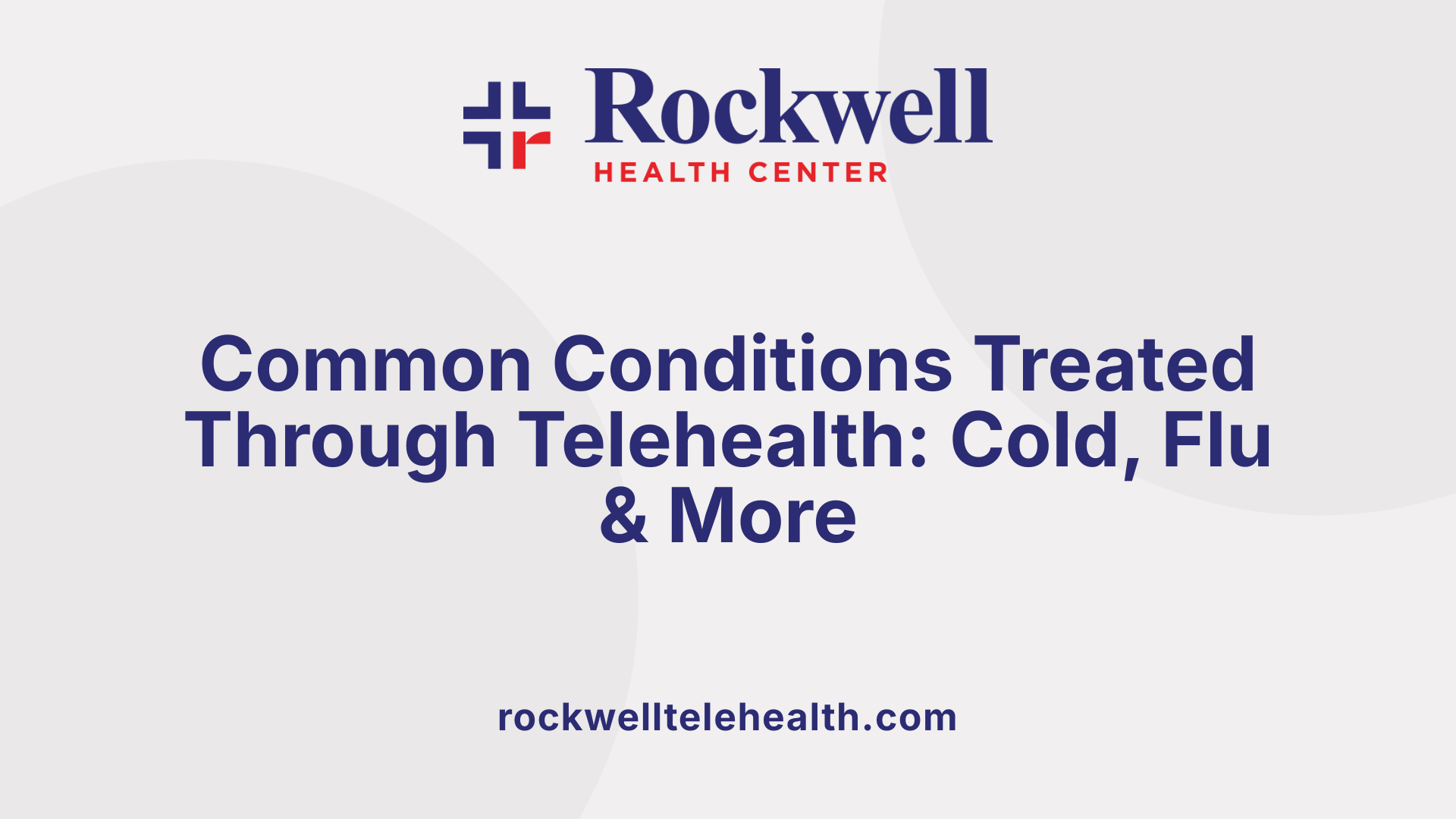
What conditions are commonly treated through telehealth for flu, cold, and minor illnesses?
Telehealth services have become a convenient option for managing many minor health issues, especially those related to the respiratory and infectious domains. Commonly, patients turn to these platforms for illnesses such as colds, influenza (flu), coughs, sore throats, sinus infections, earaches, and allergies. These conditions often come with mild to moderate symptoms that can be assessed remotely without the need for an in-person office visit.
Beyond respiratory issues, telehealth is also used to treat digestive concerns including nausea, upset stomach, and gastrointestinal discomfort. Skin conditions such as rashes, eczema, and acne are routinely managed through virtual consultations, where visual examination combined with patient history guides diagnosis and treatment.
Chronic health conditions that overlap with minor illnesses are also addressed via telehealth. For example, asthma, diabetes, and high blood pressure patients can receive ongoing management, medication adjustments, and monitoring through remote platforms.
In cases of minor injuries, telehealth providers evaluate the severity through visual assessments and patient descriptions. For example, cuts, burns, sprains, and superficial injuries can often be examined virtually, with recommendations for home care or follow-up in-person care if indicated.
Telehealth platforms like MinuteClinic Virtual Care, Doctor On Demand, Walgreens Virtual Healthcare, and others facilitate spaces where patients can receive diagnoses, treatment plans, and prescriptions efficiently.
Which common symptoms are addressed remotely?
Symptoms such as fever, cough, sore throat, nasal congestion, body aches, fatigue, and mild skin rashes are frequently managed via telehealth. Patients report these symptoms through online forms or video calls, allowing healthcare providers to evaluate their severity and determine appropriate treatment.
Providers guide patients on symptom management at home, including staying hydrated, resting, using over-the-counter remedies, and monitoring for signs of worsening illness.
How are chronic conditions managed alongside minor illnesses?
Telehealth platforms often support chronic disease management alongside episodic care for minor illnesses. This includes medication counseling, routine monitoring, and adjustments based on virtual visits or remote data sharing. For instance, patients with asthma or diabetes can receive prescriptions for medications like inhalers or insulin, with continuous oversight from their healthcare providers.
Some services, like MD Live and SSM Health, offer primary care options that encompass chronic condition follow-ups, allowing for a comprehensive approach to patient health.
What are the limitations of visual assessments during telehealth visits?
While visual examinations are a vital component of virtual consultations, they have limitations. The quality of the video connection, lighting, and camera resolution can impact the provider’s ability to accurately evaluate skin rashes, swelling, or injury severity.
Additionally, some conditions require tactile examination, lab tests, or in-person imaging to make definitive diagnoses—procedures that telehealth cannot perform. Providers often recommend in-person follow-up if visual assessment suggests that further examination is necessary.
What follow-up and escalation procedures exist?
Virtually all telehealth services include guidance on when to seek in-person care. If symptoms worsen, if there are signs of a severe or life-threatening condition (such as difficulty breathing, chest pain, or high fever), patients are advised to visit emergency services.
Follow-up routines may involve scheduling additional virtual visits, ordering lab tests, or coordinating referrals to specialists. Many platforms also provide educational resources and symptom tracking tools to monitor response to treatment.
| Service Provider | Illnesses Treated | Additional Services | Prescription Capabilities | Age Range | Availability |
|---|---|---|---|---|---|
| MinuteClinic Virtual Care | Cold, flu, strep, sinus infections | Mental health, chronic conditions, COVID-19 | Yes (non-controlled drugs) | All ages, minor illnesses | 24/7 across U.S., including holidays |
| Doctor On Demand | Cold, flu, UTI, STDs, mental health | Urgent and primary care, psychiatric services | Yes | Adults and minors | Most areas, within 5 min wait time |
| Walgreens Virtual Healthcare | Cold, sore throat, sinus issues | Minor injuries, COVID management | Prescriptions can be filled at stores | Adults 18+ | Select states, within 15 min booking |
| SSM Health | Allergies, infections, skin issues | Chronic disease management, annual checkups | Available in some plans | 2 years and older | Daily, 6 am to 10 pm |
| PlushCare | Flu, general health, prescriptions | Regular primary care, specialist access | Yes | Adults only | Available nationwide, flexible hours |
| Everlywell | Flu, diagnosis via test kit | Testing services, lifestyle management | Yes, with some coverage options | 18+ | App-based scheduling, HIPAA-secure |
| MD Live | Urgent care, mental health, dermatology | Women’s and men’s health, pediatrics | Yes, with a wide range of services | Most locations | 24/7, in minutes |
This broad spectrum of telehealth services ensures that many minor illnesses and some chronic conditions are effectively managed remotely. Patients can access quick, convenient care while avoiding unnecessary visits to healthcare facilities, thus reducing exposure risks and enhancing the overall healthcare experience.
How do online medical consultations work, including the process and ways to access these services?
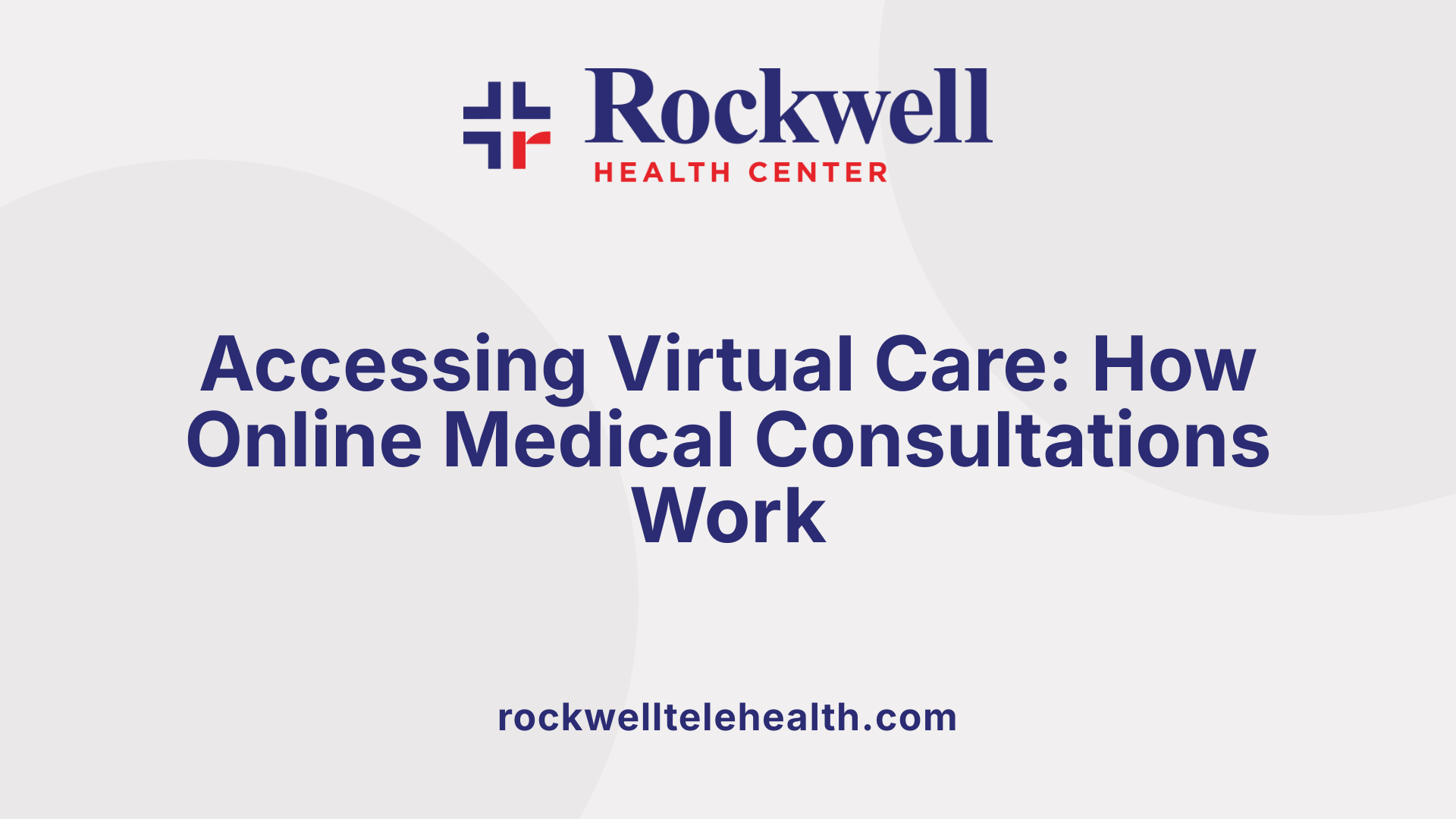
How do online medical consultations work, including the process and ways to access these services?
Online medical consultations, also known as telehealth services, have become an increasingly popular way to access healthcare conveniently from home. These services connect patients with licensed healthcare providers through digital platforms such as websites, mobile apps, or video call systems.
To begin, patients typically start by scheduling a visit through the platform’s website or app. This process often involves creating a user account and completing a registration form that includes personal details, insurance information, and a description of symptoms or health concerns. Some services, like MinuteClinic Virtual Care or Walgreens Virtual Healthcare, accept most insurance plans and offer transparent pricing, ranging from around $33 to $119 per visit.
Scheduling and registration processes
Scheduling is usually straightforward, with many platforms offering options for immediate or future appointments. For same-day care, patients can often connect with a provider within minutes—sometimes as quickly as 5 minutes on platforms like Doctor On Demand. Registration involves providing basic information, verifying identity with a government-issued ID in some cases, and answering preliminary medical questions to prepare for the consultation.
Technology requirements and platform options
Patients need a device with internet access—smartphones, tablets, or computers—and a quiet, private space for the session. Platforms like MD Live, PlushCare, or Everlywell typically require a stable internet connection and access to a camera and microphone for video consultations. Some services, such as SSM Health, also offer options for e-visits using online forms and messaging, which do not require video.
Step-by-step of a typical virtual visit
Once logged in at the scheduled time, patients join a live video session where they can describe their symptoms to the healthcare provider. During the visit, providers may ask questions, observe visible symptoms, and sometimes guide the patient through basic physical checks—like examining a rash or using a thermometer.
Providers can diagnose illnesses like flu, colds, sinus infections, pink eye, or skin conditions. They may also offer mental health support through therapy sessions or prescribe medications, including antivirals like Tamiflu or antibiotics depending on the condition.
Role of symptom questionnaires and pre-visit information
Many platforms include pre-visit questionnaires that gather information about symptoms, duration, severity, medical history, and current medications. This helps providers make accurate diagnoses quickly and efficiently.
Post-consultation care and prescriptions
After the session, providers may send prescriptions electronically to your preferred pharmacy for pickup or home delivery. They also provide advice on symptom management, lifestyle changes, or follow-up care. For things like flu, early treatment with antivirals within 48 hours can significantly improve outcomes.
Many services, such as PlushCare or MD Live, also follow up with patients via secure messaging to check on recovery or schedule additional visits if needed. Overall, telehealth platforms aim to deliver seamless, accessible healthcare that integrates diagnosis, treatment, and ongoing management.
| Platform | Availability | Cost Range | Types of Conditions | Prescription Capabilities | Note |
|---|---|---|---|---|---|
| MinuteClinic Virtual Care | 24/7, including holidays | $59-$119 | Cold, flu, strep, mental health | Prescribes medications excluding controlled substances | HIPAA compliant |
| Walgreens Virtual Healthcare | Select states, within minutes | $33-$79 | Cold, sinus, pink eye, COVID-19, flu | Prescriptions filled at Walgreens | Requires ID upload |
| Doctor On Demand | 24/7 access | Variable, insurance accepted | Flu, COVID, mental health, UTI, STDs | Can prescribe antivirals and antibiotics | For minors with parental consent |
| MD Live | 24/7 | Variable, insurance accepted | Cold, flu, sinus, pink eye, skin issues | Prescriptions sent electronically | Not suitable for emergencies |
| SSM Health | Daily 6 am-10 pm | Insurance or self-pay | Minor illnesses and chronic conditions | Prescriptions available | Offers both video and e-visits |
| PlushCare | Flexible scheduling | $99-$129 | Flu, colds, skin conditions, mental health | Prescriptions for antivirals, antibiotics | Best for ongoing primary care |
Online consultations improve access to healthcare, especially for minor illnesses and mental health needs. They are convenient and often fast but do have limitations, like the inability to perform complex physical exams or address emergencies. Still, these virtual services are transforming how people manage their health today.
Diagnosis and management of flu, cold, and minor illnesses via virtual care
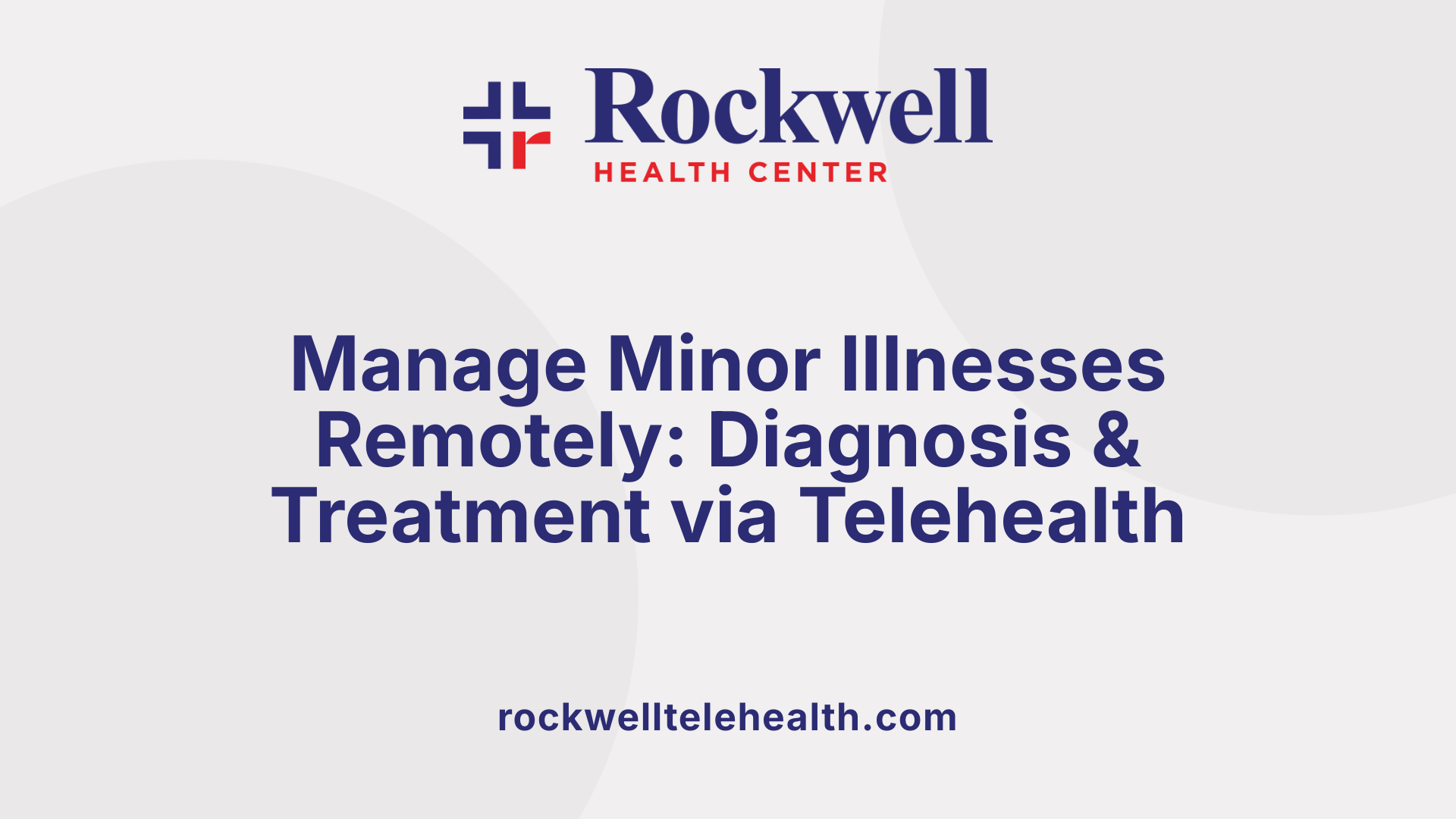
How are flu, cold, and minor illnesses diagnosed and managed through virtual care?
Virtual care services have become an increasingly popular way to diagnose and manage common illnesses such as flu, colds, and other minor health conditions. These platforms, including MinuteClinic Virtual Care, Doctor On Demand, Walgreens Virtual Healthcare, PlushCare, Everlywell, and MD Live, provide quick access to licensed healthcare providers via video or phone consultations.
Diagnosis begins with a thorough assessment of symptoms and patient history. Patients are typically asked to describe their symptoms, when they started, and any exposure risks like recent travel or contact with infected individuals. Visual examinations are often performed through video calls, where providers evaluate visible signs such as a sore throat, nasal congestion, or rash. Some services may guide patients in performing simple self-examinations, such as checking their throat, nose, or sinuses during the consultation.
These platforms frequently use testing protocols, especially for illnesses like COVID-19 and the flu. For example, providers may recommend and facilitate at-home testing kits or virtual symptom evaluation combined with recent test results. When testing confirms the presence of flu or COVID-19, clinicians can prescribe appropriate antiviral medications such as Tamiflu, Relenza, or Xofluza, especially if treatment occurs within the crucial 48-hour window after symptom onset.
Treatment typically involves a combination of prescription medications and home remedies. Antivirals are most effective when started early, and telehealth providers can prescribe them online based on symptom evaluation. Over-the-counter medications like acetaminophen or ibuprofen are commonly recommended for symptom relief, along with advice on hydration, rest, and supportive care.
In some cases, severe symptoms or signs of complications necessitate in-person evaluation. Healthcare providers on these platforms have protocols to identify warning signs—such as difficulty breathing, high fever, persistent pain, or confusion—that indicate the need for direct medical intervention.
Overall, virtual care facilitates prompt diagnosis and management of minor illnesses. It minimizes the need for in-office visits by providing prescriptions, symptom management guidance, and follow-up support. This approach ensures patients receive timely treatment while reducing the risk of infection spread, improving convenience, and maintaining effective health outcomes.
Benefits of online medical consultations for minor health issues
What are the benefits of using online medical consultation services for minor health issues?
Utilizing online medical consultation platforms for minor illnesses provides several significant advantages. The foremost benefit is convenience. Patients can access healthcare professionals from their homes or anywhere, eliminating the need for travel and reducing long waiting times common in traditional clinics.
One of the greatest advantages is the minimized risk of exposure to infectious agents. During flu seasons or infectious disease outbreaks like COVID-19, avoiding crowded waiting rooms helps protect patients and healthcare workers.
Timely access to care is another critical factor. Many telehealth services, such as MinuteClinic Virtual Care and MD Live, offer immediate or rapid appointments, sometimes within minutes. This quick access ensures that symptoms are addressed promptly, reducing the progression of minor illnesses.
For individuals with mobility challenges, disabilities, or those living in remote areas, online consultations bridge geographical gaps. They enable continuous care and follow-up without the physical barriers of traditional healthcare settings.
Moreover, these services support ongoing management of chronic conditions and mental health concerns. Features like mental health therapy through platforms such as Doctor On Demand, and follow-up care, improve health outcomes through consistent engagement.
Most platforms accept insurance plans and also offer transparent out-of-pocket pricing, making healthcare accessible and affordable. For example, costs generally range from $33 to $119, depending on the service and patient needs.
Additionally, prescriptions, including antibiotics or antivirals for flu, can often be sent directly to the pharmacy or delivered to the patient’s home. This rapid turnaround enhances the effectiveness of treatment, especially when medications like Tamiflu are most effective within 48 hours of symptom onset.
In summary, online healthcare platforms streamline minor illness management, mitigate additional health risks, and support holistic care through convenient, fast, and safe access to licensed medical providers.
Treatment options available through telehealth for flu, cold, and minor illnesses
What treatment options are available through telehealth for flu, cold, and minor illnesses?
Telehealth services now provide a comprehensive approach to managing common health issues like the flu, cold, and minor illnesses. Patients can access virtual consultations with licensed healthcare professionals who are equipped to assess symptoms, examine visible signs of illness, and recommend suitable treatments.
One of the primary treatment aspects involves prescribing antiviral medications such as Tamiflu if patients present early enough—ideally within 48 hours of symptom onset. These antivirals can significantly reduce the severity and duration of the flu when started promptly.
Beyond antivirals, healthcare providers can recommend over-the-counter (OTC) medications such as acetaminophen, ibuprofen, and decongestants to alleviate symptoms like fever, aches, and congestion. For instance, patients experiencing sore throat or sinus pressure may receive advice on using sprays or antihistamines.
Telehealth platforms also support symptom relief through visual assessments, allowing providers to examine the throat, skin rashes, or eyes via video. This enables more accurate diagnoses of conditions like pink eye, skin infections, or injuries requiring medical attention.
Home care advice is an integral part of treatment, with providers emphasizing hydration, rest, and proper nutrition. Additional tips include using humidifiers, saline nasal sprays, and practicing good hygiene to support recovery.
Follow-up care can include monitoring the progression of illness, adjusting medications if necessary, and providing guidance on when to seek in-person care if symptoms worsen or fail to improve.
Some services extend their scope to manage minor injuries, urinary tract infections, and skin conditions through virtual assessments complemented by visual tools. This approach ensures quick and effective treatment, reducing the need for in-person visits.
Overall, telehealth offers a safe, efficient way to treat many minor health issues by combining symptom management, medication prescriptions, visual examinations, and home health guidance, closely mirroring traditional in-person care quality.
When and how to seek online medical care for flu, cold, or minor illnesses
Signs that indicate online consultation is appropriate
Online medical care is a convenient option for mild, stable, and non-worsening symptoms of illnesses like the flu, cold, or other minor conditions. If you experience symptoms such as a mild cough, nasal congestion, slight fever, or sore throat, and they are not accompanied by severe distress, an online visit may suffice.
Platforms like MinuteClinic Virtual Care, Doctor On Demand, Walgreens Virtual Healthcare, PlushCare, and others offer quick access to licensed healthcare providers. These services can diagnose symptoms, recommend medication, and provide guidance for home care.
However, if your symptoms include high fever, difficulty breathing, chest pain, persistent vomiting, or severe weakness, it’s advisable to seek in-person care or visit an emergency room. Always consider the severity and progression of your symptoms when deciding whether a virtual consultation is suitable.
Preparation for the virtual visit
Preparing for an online consultation involves a few simple steps to ensure an efficient and productive visit. First, test your device—smartphone, tablet, or computer—to confirm your internet connection, camera, and microphone are working.
Choose a quiet and well-lit space free of distractions. Gather your health information, including recent medical history, current medications, and details of your symptoms such as onset, duration, and severity.
It’s helpful to have a list of questions ready for your provider. Make sure to have your insurance information available if applicable, and if required, upload a government-issued ID or fill out medical questionnaires before the session.
Timing considerations and symptom severity
Timing can impact the effectiveness of your treatment. Many antiviral medications like Tamiflu are most effective if started within about 48 hours of symptom onset. Therefore, early consultation—preferably within the first two days—is ideal.
For less severe symptoms or if you need reassurance, scheduling a virtual visit during business hours or as soon as symptoms begin is sufficient. Many platforms promise a quick connection, often within minutes, making it easier to get treatment promptly.
In cases where symptoms are worsening or if your condition doesn’t improve in a few days, consider scheduling follow-up consultations or seeking in-person care.
Limitations of telehealth in emergency settings
While telehealth provides a valuable option for minor illnesses, it has limitations, especially in emergencies. Conditions requiring urgent assessment—like chest pain, severe shortness of breath, sudden weakness, or signs of a stroke—should not be handled via virtual visits.
These situations demand immediate in-person evaluation or emergency services. Telehealth providers usually advise patients to seek emergency care if symptoms are severe or life-threatening.
Always recognize the signs of an emergency, and do not delay seeking urgent care when necessary. Virtual consultations are a helpful first step for minor illnesses but are not a substitute for emergency response in critical situations.
General health information about flu and cold symptoms, prevention, and medications

What general health information is available about symptoms, prevention, and medications for flu and cold?
The differences between cold and flu symptoms are significant and understanding them can help determine the appropriate response.
Colds usually cause milder symptoms like nasal congestion, sneezing, sore throat, and cough. Fever is uncommon, especially in adults, and fatigue is generally minimal. Conversely, the flu strikes suddenly with high fever, body aches, severe fatigue, chills, and sometimes gastrointestinal symptoms such as nausea or diarrhea.
Prevention plays a crucial role in avoiding these illnesses. Immunization with the seasonal flu vaccine can significantly reduce the risk of infection and severity. Good hygiene practices—such as frequent handwashing, covering mouth and nose when coughing or sneezing, and avoiding close contact with infected individuals—are essential.
Antiviral medications like oseltamivir (Tamiflu), zanamivir (Relenza), and peramivir (Rapivab) are effective if administered early, ideally within 48 hours of symptom onset. These drugs can decrease the duration and severity of the flu, especially in high-risk groups.
For managing symptoms, over-the-counter remedies are commonly used. These include acetaminophen or ibuprofen for pain and fever, decongestants for nasal congestion, and cough suppressants as needed. Rest, hydration, and proper nutrition support recovery. It is important to note that antibiotics are ineffective against viral infections such as cold and flu.
Recognizing severe illness symptoms—such as difficulty breathing, chest pain, persistent high fever, confusion, or any signs of dehydration—is vital. These indicate the need for immediate in-person medical attention.
Preventative tips include vaccination, maintaining good hand hygiene, avoiding touching the face, disinfecting frequently touched objects, and staying home when feeling unwell to limit spread.
Here’s a quick overview of these important points:
| Aspect | Cold | Flu | Important Notes |
|---|---|---|---|
| Symptoms | Mild congestion, sneezing, sore throat | Sudden onset, high fever, body aches, fatigue | Different severity levels and onset |
| Prevention | Hygiene, vaccination | Hygiene, vaccination, avoid contact | Most effective vaccination before flu season |
| Medications | OTC remedies, home care | Antivirals, OTC, supportive care | Early treatment vital for antivirals |
| When to seek care | Mild symptoms | Severe symptoms, difficulty breathing | Prompt medical attention required |
Educating oneself about these differences and prevention methods helps in making informed health choices. Staying updated on flu seasons and vaccination schedules further enhances protection against illness.
Summary and final thoughts on virtual healthcare for minor illnesses
What are the benefits of online medical consultations for minor health issues?
Using virtual healthcare platforms, such as MinuteClinic Virtual Care, Doctor On Demand, Walgreens Virtual Healthcare, PlushCare, Everlywell, and MD Live, provides numerous advantages for patients with minor health concerns. These services offer rapid access to licensed healthcare providers, often connecting within minutes or hours, from the comfort of home or on the go.
Patients can receive diagnoses, advice on symptom management, and prescriptions if necessary, including antiviral medications like Tamiflu for the flu or antibiotics for sinus and ear infections. Virtual visits eliminate the need for travel, reduce waiting times, and lower exposure to germs in crowded clinics or waiting rooms. This is especially critical during infectious outbreaks or when managing chronic conditions.
Moreover, telehealth expands access to care, including mental health support such as therapy for anxiety and depression. Many services operate 24/7, even on holidays, ensuring help is always available when needed. Cost transparency and flexible payment options, including insurance, out-of-pocket fees, or flexible self-pay plans, make virtual care affordable.
Why should you consider using these virtual healthcare options?
The convenience, speed, and accessibility offered by telehealth services make them an excellent choice for minor illnesses. If symptoms are mild to moderate and manageable at home, virtual consultations can be initiated promptly, often within minutes, facilitating quick treatment. For example, minor ailments like coughs, colds, flu, sinus issues, pink eye, and skin conditions are easily addressed through telemedicine.
In cases where antiviral medications like Tamiflu or antibiotics are needed, providers can prescribe them online, speeding up recovery and reducing the risk of complications. For mental health concerns, therapy sessions via video or chat are available, supporting emotional well-being without the need to visit a clinic physically.
It's important, however, to recognize when in-person care is essential—such as severe symptoms, emergencies, or complex health issues. Virtual platforms are designed to complement traditional care, not replace it entirely.
How do virtual healthcare platforms address concerns about quality and safety?
Reassuring patients about the safety and quality of online care is crucial. Most telehealth providers, including those mentioned, employ licensed, board-certified healthcare professionals who adhere to strict medical standards and regulations. Their platforms are HIPAA-compliant, ensuring privacy and secure handling of personal health information.
While prescriptions are limited to non-controlled substances, and providers cannot prescribe medications like narcotics through these services, they can prescribe necessary antivirals, antibiotics, and mental health medications safely and appropriately. Before a consultation, patients typically upload verification IDs and complete medical questionnaires, promoting comprehensive assessments.
Furthermore, telehealth providers often have protocols for identifying when an in-person evaluation is necessary, safeguarding patient safety.
What does the future hold for telemedicine for minor health problems?
The outlook for telehealth in managing minor illnesses is promising. Advances in technology, increased acceptance among healthcare professionals and patients, and ongoing regulatory improvements are likely to enhance service quality and accessibility further.
Emerging innovations include integrating remote monitoring devices, AI-driven symptom checkers, and expanded mental health services. As telemedicine becomes more embedded within healthcare systems, expect broader insurance coverage, more specialized services, and improved user experience.
Additionally, the ongoing pandemic has accelerated digital healthcare adoption, highlighting its importance and feasibility in everyday medical care. Overall, telehealth is poised to become an integral part of managing minor illnesses efficiently, safely, and conveniently.
| Platform | Services Offered | Availability | Cost Range | Insurance Acceptance | Age Restrictions | Notable Features |
|---|---|---|---|---|---|---|
| MinuteClinic Virtual | Diagnosis and treatment for colds, flu, strep, mental health | 24/7, including holidays | $59-$119 | Most plans | No age limit explicitly, but mental health in select states | Video consultations, HIPAA compliant, fast access, prescriptions for non-controlled meds |
| Doctor On Demand | Flu, cold, minor illnesses, mental health, psychiatric care | 24/7, minutes connect | Varies, typically higher | Most plans | Adults and minors with parental consent | Broad scope including mental health, chronic disease, same-day appointments |
| Walgreens Virtual | Common illnesses, COVID-19, prescriptions | Select states, rapid within 15 mins | $33-$79 | No, out-of-pocket only | 18+ only | Prescription delivery, uploaded ID, simple medical history |
| PlushCare | Flu treatment, antiviral prescriptions | Flexible hours, same-day care | Covered by insurance or $14-$199 | Most plans | Age unspecified | Board-certified doctors, focus on flu, detailed symptom info |
| Everlywell | Flu diagnosis, prescriptions, testing | 20-30 min visits, adult only | $10-$59 cash, insurance accepted | Many plans | 18+ only | Testing options, process includes health profile creation |
| MD Live | Urgent, primary, mental health, dermatology, women's health | 24/7, minutes connection | Transparent pricing, varies | Most plans | No explicit age, generally adult and children | Large network, multiple specialties, emergency caveats |
Final Thoughts
Virtual healthcare for minor illnesses has transformed how we access medical support. Its convenience, speed, and expanded reach make it an essential option for managing everyday health concerns efficiently.
Patients can quickly get diagnosed, prescribed, and guided on symptom management without leaving home—saving time and minimizing exposure risks. As technology advances and regulations evolve, telehealth's role in delivering quality, safe, and accessible care will continue to grow.
Whether dealing with a cold, flu, mental health issue, or minor infection, virtual care services are a practical, reliable choice that complements traditional healthcare, offering peace of mind and prompt relief.
The future of telemedicine is bright, promising even more personalized, integrated, and user-friendly health solutions for minor illnesses.
Embracing the Future of Healthcare
Online medical consultations have become an integral part of managing minor illnesses, offering a safe, efficient, and accessible alternative to traditional in-person visits. As technology continues to advance, the scope and quality of telehealth services are expected to expand, further bridging gaps in healthcare access and improving patient outcomes worldwide. By understanding how these services work, their benefits, and when to seek virtual care, patients can make informed decisions and take control of their health with confidence.
References
- MinuteClinic Virtual Care
- Telehealth for Flu and Cold Relief
- Walgreens Virtual Healthcare: Online Doctor & Prescriptions
- Doctor On Demand® Telehealth: 24-Hour Online Doctor
- Express Virtual Care and Virtual Visits
- Flu Treatment: Get Treated for the Flu Today
- Flu Treatment Online: Book Your Telehealth Appointment ...
- MD Live: Board-Certified Doctors on Call 24/7
- What can be treated through telehealth?



















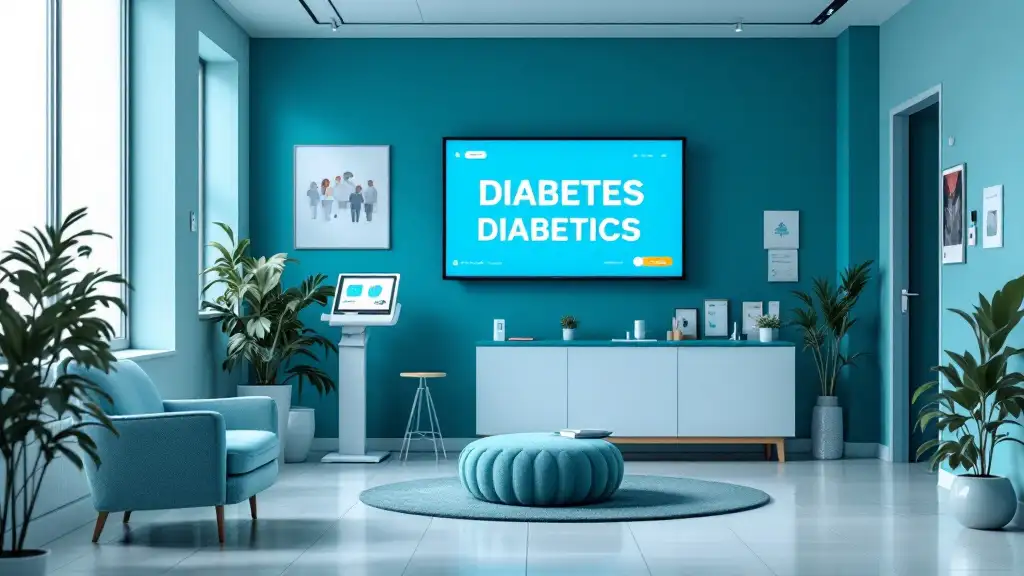
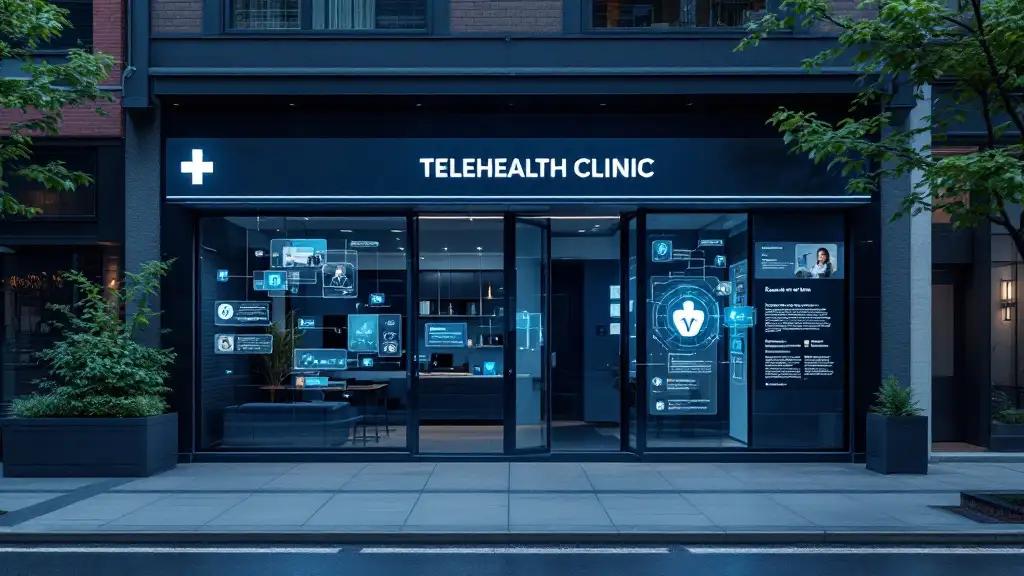



































































.png)